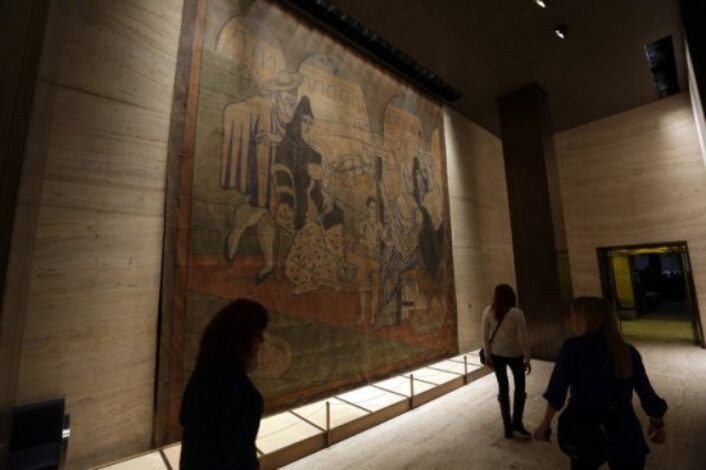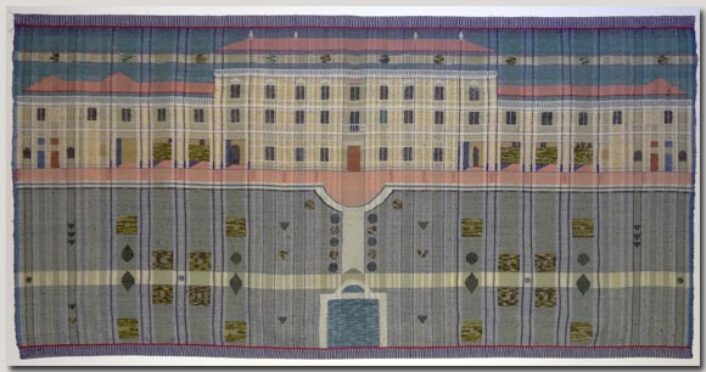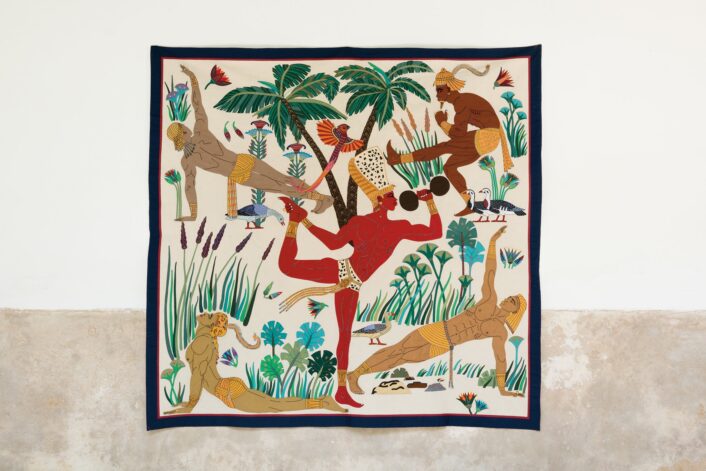Culture
Returning home…
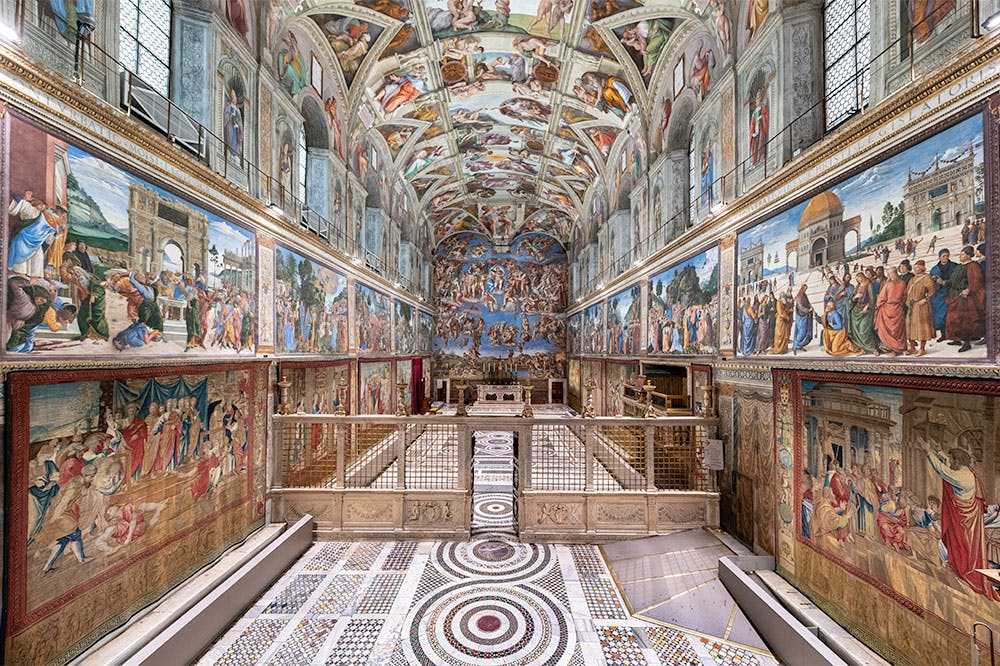
The tapestries adorning the walls of the Sistine Chapel.
Image courtesy of: Apollo Magazine
Last February, Pope Francis asked the Vatican Museum’s conservationists and restorers to allow all 12 of Raphael’s tapestries to be displayed simultaneously at the Sistine Chapel in order to share their beauty with everyone. The delicate tapestries were displayed together for only one week for two reasons. Most importantly, the tapestries needed to be protected, and the second reason is because some were on loan to other museums.
However the main reason for this display is to mark the 500th anniversary of Raphael’s death. This is the first time in centuries that all 12 of the tapestries designed by Raphael have been hung on the lower walls of the Sistine Chapel. For the past 10 years, these works of art made with silk, wool, gold, and silver thread have been painstakingly restored by Vatican Museum conservationists.
What a celebration!
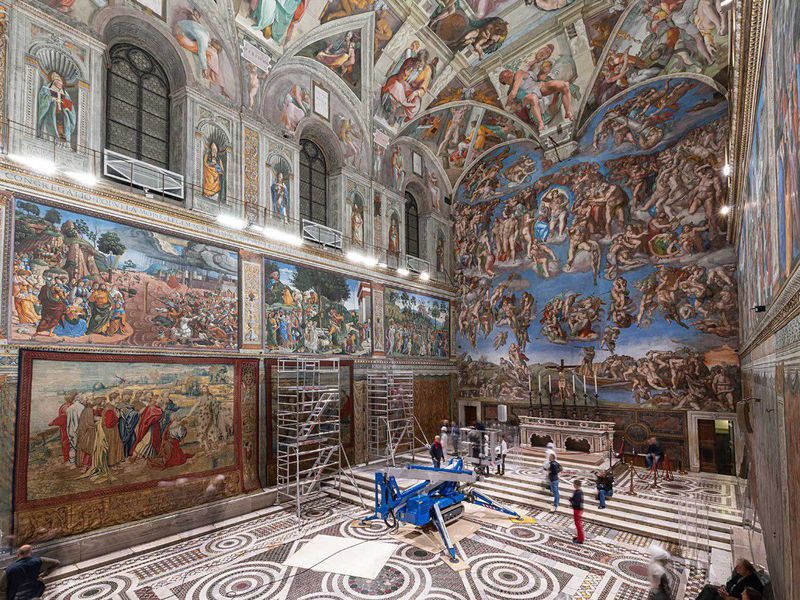
The delicate process of hanging the tapestries for the temporary display.
Image courtesy of: Smithsonian Magazine
Commissioned by Pope Leo X, the Vatican unveiled seven of the 5 meter x 4 meter works on December 26, 1519. Although unconfirmed, most likely Raphael was in attendance for the event; unfortunately, he died suddenly four months later at the young age of 37. During their existence, the tapestries were displayed for major holidays and feasts. Sadly, this supports the theory that Raphael only saw them hung together once. The remaining five tapestries were finished after Raphael’s death.
Exhibition curator Alessandra Rodolfo confirmed that the last recorded instance of all 12 tapestries hung in the chapel together dates to the late 1500s. Barbara Jatta, the director of the Vatican Museum, said “They were conceived for this space and so we thought it was the best way to celebrate.”
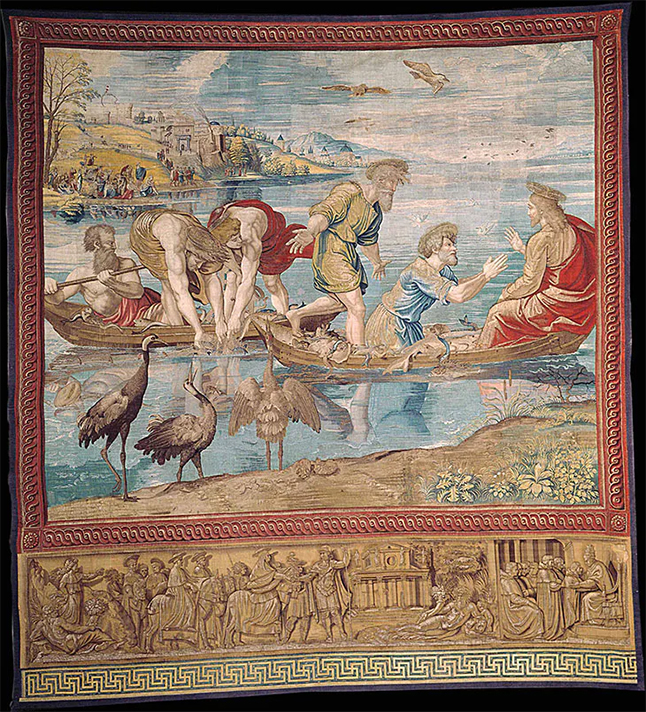
“Miraculous Draught of Fishes”
In this scene, Christ tells Peter, the “fisher of men”, to cast his net into the water. When the net hits the water, Peter and the apostles make an amazing, fantastical, catch.
Image courtesy of: Apollo Magazine
Since their completion hundreds of years ago, these tapestries have had a very tumultuous path. In 1527, soldiers from the Holy Roman Empire sacked Rome and terrorized locals. This ransacking lead to mass destruction and theft which included the stealing of artifacts. The tapestries were stolen and were sold piecemeal.
An Italian noblewoman purchased two of the treasured works, but they were looted by pirates and somehow found in a Tunisian market. From there, the tapestries found themselves in Constantinople where they were acquired by a constable who graciously returned them to the Vatican.
By the end of the century, all of the tapestries were recovered and displayed in St. Peter’s Basilica and the Braccio di Constantino rather than the Sistine Chapel. In the late 18th-century, Napoleon’s troops took the tapestries to Genoa and Paris before returning them to the Vatican in 1808. Since that time, the Vatican Museum has displayed the tapestries on a rotation. Recently, the tapestries were been presented behind glass for conservation.
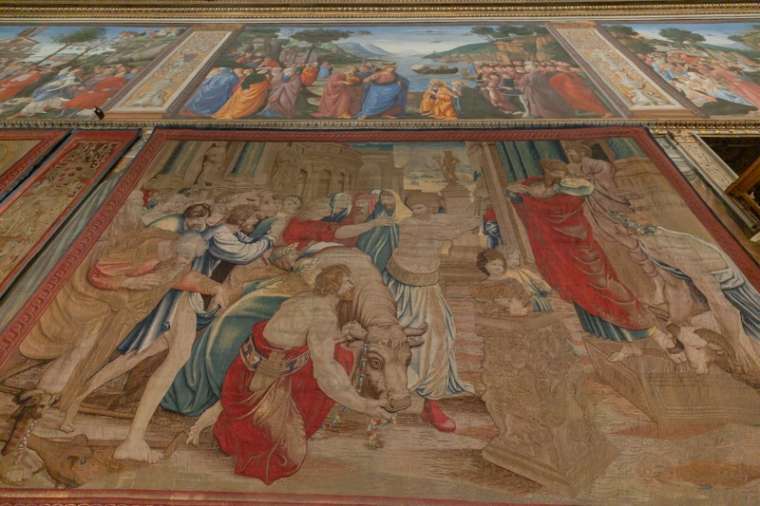
One of Raphael’s tapestries which hangs below a narrative scenes of Moses and Christ’s life. Most probably, this biblical scene was produced by painters… maybe Botticelli.
Image courtesy of: Catholic News Agency
The tapestries were Pope Leo X’s greatest contribution to the Sistine Chapel… the setting for the principal ceremonies of the papal court. During extraordinary occasions, they were to be hung over the section of the wall frescoed with “trompe l’œil” hangings and beneath the narrative scenes from the life of Moses and Christ’s life produced by painters, which included Botticelli and Ghirlandaio, and completed in 1482.
There is no doubt that the tapestries were meant to rival the stunning ceiling produced by Michelangelo. Obscene quantities of gold and silver thread, as well as colored wool and silks, were used by the weavers in Pieter van Aelst’s workshop in Brussels. The cost of the tapestries was said to be five times the amount Michelangelo received for the ceiling. At that point in time, painting was considered a “poor man’s tapestry.”
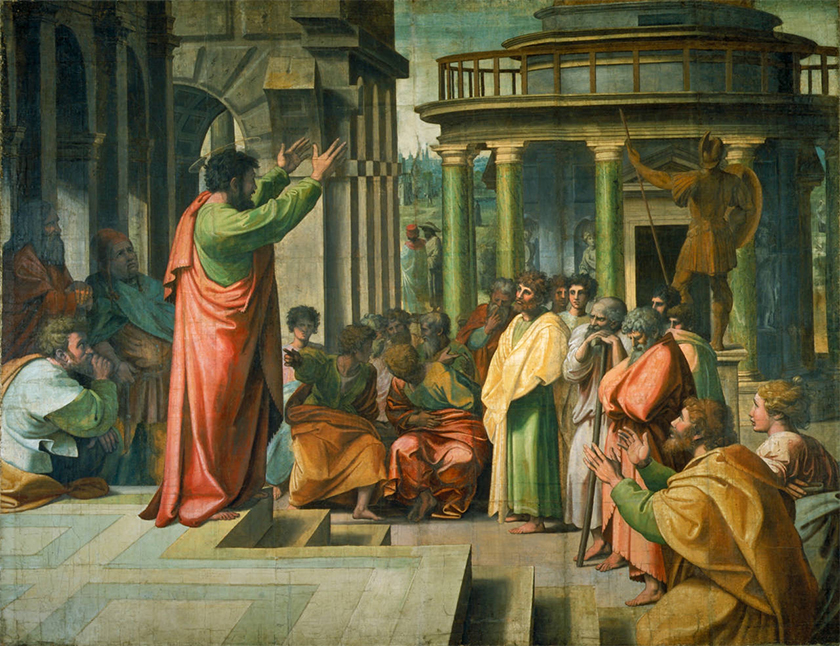
“Paul Preaching at Athens: Acts Chapter 17: Verses 16–34”. Raphael cartoon, 1515 – 16, Italy.
Image courtesy of: Victoria & Albert Museum
When Pope Leo X commissioned Raphael to design a set of tapestries of the “Acts of the Apostles” for the Sistine Chapel, Raphael knew he would have to work across a couple of different mediums. In his studio, Raphael and his painters worked on ten full-scale “cartoons” to serve as models for the weavers. The “cartoons” were painted in a thick gouache on many sheets of paper where they overlapped before being pasted together. Raphael himself is said to have painted these “cartoons.”
The “cartoons” were sent to Flanders, Belgium and cut into vertical stripes for easier handling; in 1517, the weaving began. Seven of the tapestries were delivered to the Vatican in time for their Sistine Chapel exhibition on December 26, 1519. All ten of the tapestries were complied for Pope Leo X’s death in December 1521.
These “cartoons” were purchased by the future Charles I in 1623 and are on loan from Her Majesty The Queen to the Victoria & Albert Museum. In addition, three of these preparatory studies for the “cartoon” are in the Royal Collection.
